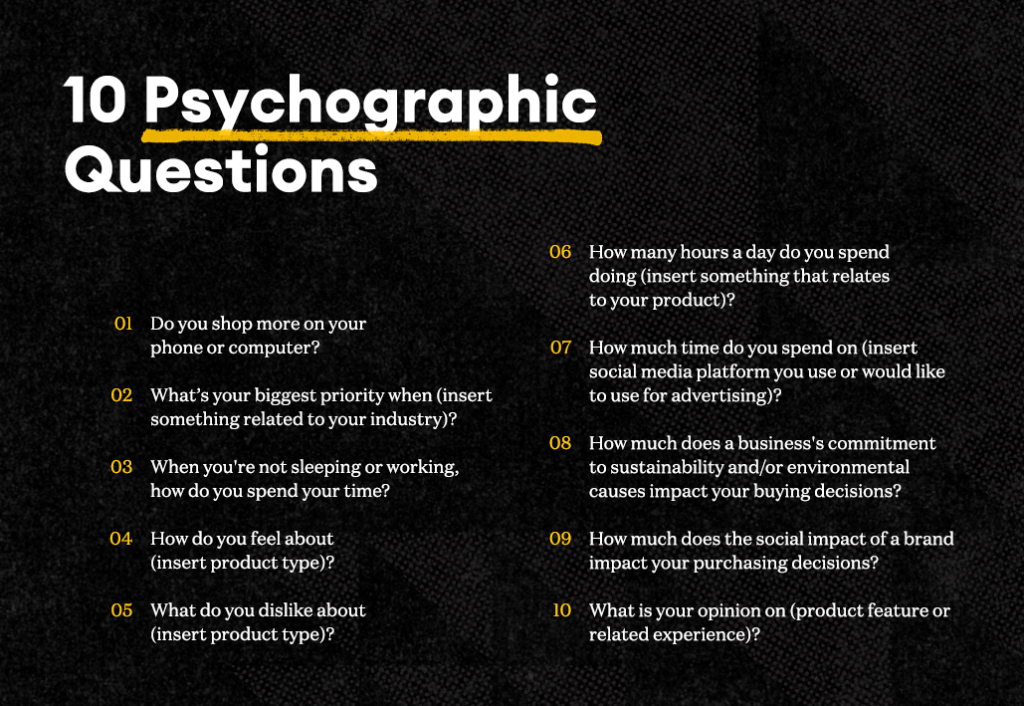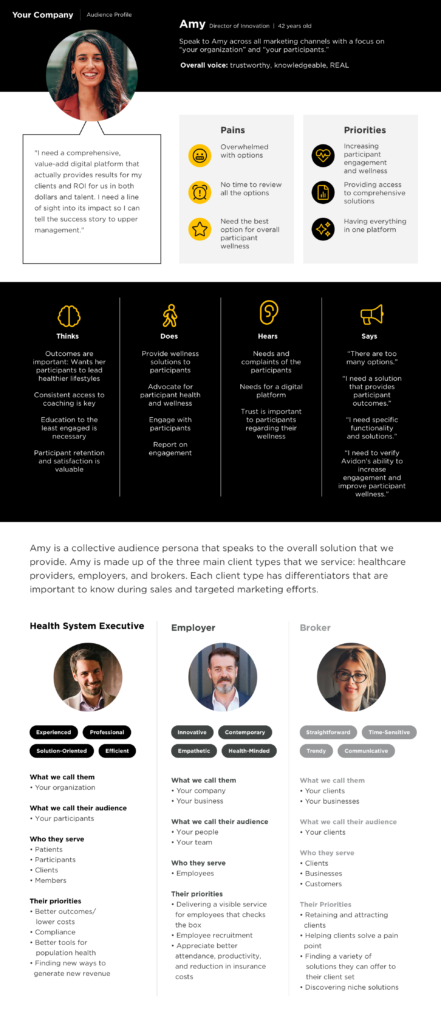Case and point: COVID-19. The pandemic put physical experiences on an indefinite pause and demanded businesses accelerate digital transformations to meet consumer needs. As discovered in our “Data Driving Insights Into the Evolving Customer Experience“, many consumers have not only adopted, but have a new-found affinity for some of those digital-first experiences, including telehealth, mobile banking services, and retail subscription models.
Now, as pre-pandemic norms start to make their comeback, businesses must reassess how pandemic-purchasing behaviors and changes in media consumption will continue to shift customer expectations, and – as a result – demand new marketing behavior, as well.
We saw this first-hand while helping a client map out and navigate the shifting landscape of food supply and distribution. COVID-19 altered the way in which restaurants do business and created a highly changing and dynamic situation for the industry. But before they could alter the customer journey to meet new everyday business needs, they needed to complete a customer behavior analysis and reconsider their customer segmentations. By conducting a customer survey that included 580 decision-makers within the food/supply ordering chain, we were able to pinpoint specific ways COVID impacted the customer journey (specifically menu evaluation, product selection, and ordering). Additionally, attitudinal segmentation helped us uncover new strategies for supporting each of their core customer groups. At the end of the day, it’s a crucial exercise that can drive increased value realization, customer engagement, loyalty, and market share.
So, ready to conduct your own customer analysis? Let’s get started.
Customer Analysis and Customer Segmentation 101
Before we dive in, let’s drive alignment around the definitions of and differences between customer analysis and customer segmentation.
What is customer analysis and customer segmentation?
Customer analysis is the process of researching your customers, using both qualitative and quantitative methods, to develop insights and understanding. Customer segmentation involves using those insights to divide customers into groups centered on similar characteristics.
Why is customer analysis and segmentation important?
Customer analysis and segmentation helps you better tailor your offerings and messaging to add value for your customers, addressing their specific use cases. Survey data from McKinsey shows companies using customer analysis to improve their services consistently outperform their competitors. The results showed 93% of companies whose corporate decisions were driven by consumer analytics earned greater profits than their competitors, that number jumped to 112% for sales growth and 115% for return on investment.
Businesses must reassess how pandemic-purchasing behaviors and changes in media consumption will continue to shift customer expectations, and demand new marketing behavior.
A Customer Analysis Framework to Increase Customer Engagement
There are four stages that any customer analysis project should follow:
Stage 1: Identify current customers
How much do you truly know about your customers today? Chances are you could have internal data you aren’t fully maximizing that can help you understand more about your customers. This proprietary data could help you form insightful survey questions to ask your customer base so you can get a strong understanding of what drives their purchases.
Remember to ask questions that help you understand:
- Market-based trends influencing purchase decisions.
- Disruptors, such as changes in technology, that are changing your industry.
- Competitors that are gaining momentum.
- Information about your target audience that is missing or inaccurate.
- Where you can maximize return on investment throughout the customer journey.
Stage 2: Break customers into subgroups based on traits and motivations
After analyzing your internal and survey data, you’ll want to start segmenting groups based on what motivates their purchase decisions. In the case of the leading food service company we mentioned above, we were able to segment customer profiles based on:
- The level of decision making authority
- Job role
- Location — urban, suburban, rural or other
- Restaurant type
- Price sensitivity
Although these probably won’t be the exact same segments you’ll use to understand your customers, they give you an idea on how to structure your approach. You want to create segments around realities that could influence what products or services customers want from you and how much they’re willing to spend.
Stage 3: Outline customer groups needs
Once you understand your customer groups, the next step is digging deep into their specific needs. For the example above, we asked questions such as “How long has your business had to close as a result of COVID-19?” or “How have your weekly supply needs changed as a result of the pandemic?” Questions like these help assess new trends for each use case and where customers are experiencing pain points.
Needs can develop through a number of avenues so be sure to understand the following when trying to get to the bottom of what customers are actually looking for:
- Pain points
- Values
- Motivations
- Influences
- Benefits
Stage 4: Pinpoint solutions for each customer group
Once you know who your customers are and what they’re looking for, you can start to solve the problem! This is where your company will really shine and how you’ll differentiate yourselves from competitors.
Here are some solutions you can start to get creative with:
- What improvements do you need to make to your core offerings, technology or customer service?
- What resources can you create that would help your customers use your product or navigate their industry?
- Is there a new product or offering that would highly differentiate your company from competitors?
Also read: How to Use Design Studios For Innovation
Techniques to Improve Customer Analysis
We have a lot of experience with customer analysis and over the years we have found these simple adjustments help create superior customer profiles and insights.
Combine data to create detailed buyer profiles
Using both qualitative and quantitative data can help you create a full picture when it comes to understanding your customers. Qualitative data refers to information you gather from first person interviews, focus groups or observations you make in the field. Quantitative data uses internal metrics and survey results to structure the themes that could be arising from your qualitative information. Using these in tandem can help you understand both functional and emotional drivers to create multi-dimensional profiles.
Customer journey mapping
Customer needs and motivations might change throughout their lifecycle, so it’s important to map their journey so you can pinpoint areas where you might be of greatest assistance (and achieve maximum return on investment). Here’s what to remember when you start customer experience mapping:
- Chart the important turning points in their journey using the qualitative and quantitative data you’ve collected.
- Look internally, who are the stakeholders in your organization that are responsible at each part of the sales process?
- Does your internal map follow the reality of the journey your customers are going on. If not, where do they diverge and how can you adjust your processes to better accommodate for your customer experience?
Tools to ingest, aggregate, and analyze datasets
Data can easily become overwhelming; trying to collate information manually is likely to take a lot of time and cause you to miss themes. Using data software can help eliminate these two problems.
At Tallwave, we empower proprietary software for our clients to help process data, pinpoint customer pain points, and map a digital journey from start to finish. Using a software like this that aggregates all data sources is essential to making sure your customer analysis project gets done on schedule, and is as accurate as possible.
Plan for the design studio and think outside the box
A design studio is a rapid iteration process that helps your team collaborate and align so you can creatively tackle inefficiencies and improve the user experience across your entire organization. This approach could help you understand the way your entire team is approaching the process and arrive at solidified decisions together.
If you take a design studio approach, we recommend setting some rules to encourage creativity. Make sure everyone participating is ready to create, not watch. This includes even those who are inexperienced or feel more comfortable watching! Reimagine possibilities together in a space where everyone’s ideas matter.
Create customer feedback system to power agile innovation
Once you’re ready to implement changes, you’ll want to make sure you have a method that allows you to listen to your customers and respond to their feedback fast. Your customers can drive your innovation, so make sure you’re consistently gathering qualitative and quantitative data about them to iterate and continue providing solutions that meet their ever-changing needs!
The Bottom Line
Customer behavior analysis helps businesses across all industries understand where they currently stand and where they need to go in order to improve the holistic customer experience, accelerate value realization, increase customer engagement, and develop new digital-first experiences. As a result of this process, we’ve managed to to improve the ways in which our clients leverage technology and integrate new features to not only understand evolving consumer behaviors – as seen during the pandemic – but plan for their future CX needs.




